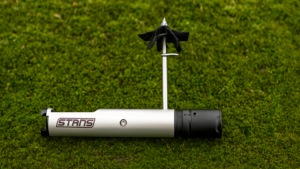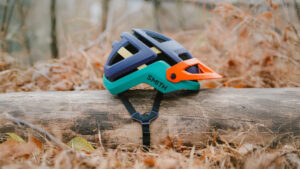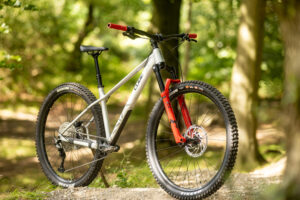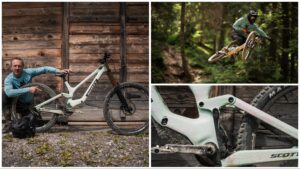29er bikes: what you need to know
It’s hard to know where to start with 29ers, as so many things about them are different from 26in bikes, so let’s start with the most obvious difference: wheel size.
Bigger wheels roll over bumps better. That’s a fact. The lower strike angle associated with a 29er wheel means that it will ride up and over a bump more easily than a smaller wheel. Equally important to maintaining forward momentum on rough ground is that they don’t drop as deeply into holes either.

Because the rims and tyres are bigger, and the spokes are longer, 29er wheels are at least 10 per cent heavier than 26in wheels. There’s simply no getting round it. And due to the increased size of the wheel it can’t be as strong or as stiff as a 26in wheel using similar components.
29er geometry
Bigger wheels raise the axle height, so if the BB on a 29er is at the same height as on a 26in wheeler, the BB drop increases by 1.5in. Hence the increase in stability on a 29er.
The chainstays grow to accommodate the bigger wheel and this aids stability further. Longer chainstays on 29ers makes them harder to manual, but the flipside is that they make a 29er climb better. Why else would hill-climb motorcycles have such long swingarms?

Head angles and fork offsets on 29ers have been revised to mimic the steering characteristics of 26in bikes so the only problem with having a bigger front wheel is the increased toe overlap you get on small frame sizes.
Handling

When you ride a 29er it definitely feels more stable than a 26in wheel bike and everything seems to happen a little slower, even though you’re actually going faster. It’s as if the bike calms the trail down a touch, and in doing so encourages you to go faster. How do we know that that they are quicker than 26ers? Well, the clock doesn’t lie.
Cornering grip is amazing on a 29er and once you realise that you are nowhere near the limits of traction, you can get on the gas mid-turn rather than waiting for the exit. In the wet, well, it’s a total game changer. It’s hard to say with certainty what’s actually generating the extra grip, but it’s probably a combination of the slightly elongated contact patch, flex in wheels and the physically different geometry of a 29er.
Arguably one of best attributes of a 29er is that it offers a different ride experience to a 26in, putting a different slant on the same old trails. Everyone who has borrowed one of our 29er test bikes ‘just to see what all the fuss is about’ has come back with a huge smile on their face — and in the post-ride pub debrief they’re usually working out how they might be able to afford one.
Don’t take our word for it, however. There are plenty of demo days up and down the country so get along to one and take a 29er for a spin. You’re unlikely to be disappointed with the experience.
29er pros and cons
Pros
- Big wheels roll over bumps better
- 29ers feel more stable at speed
- The wheels don’t drop as deeply into holes so the bike carries more speed on rough terrain
- There’s more grip and traction
- Increased stability for jumping
- More comfortable riding position for climbing
- Smoother than 26in wheels on small bumps
- When you break traction it happens in a slower, more controlled manner, reducing the chance of crashing
- According to the clock, they are faster
- They’re different, and make the same old trails feel different too
Cons
- 29ers are heavier — that’s just how it is
- Increased rotational weight of the wheel makes 29ers accelerate more slowly
- Bigger bikes can be more awkward and harder to manoeuvre in really tight terrain
- Increased unsprung mass (the parts of the suspension that move up and down over the bumps) reduces the suspension’s ability to react quickly to changes in terrain
- It’s hard to go back to 26in wheels
- Tyre choice is currently more limited
- Bigger wheels buckle and bend more easily
- Due to smaller production runs, 29ers tend to more expensive than 26in bikes with the same spec
29er myths
They feel like they have more travel
While bigger wheels definitely take the edge off smaller bumps, they don’t increase travel. The bikes definitely feel more stable though, giving a handling response more akin to a longer-travel 26in bike.
29in tyres have much bigger contact patches
They are bigger, but the increase in the area of tyre touching the ground can be as little as five per cent. The greatest difference is in the length of the contact patch, but it’s nothing like as big as swapping out a 1.9in 26in tyre for a 2.3in.
29ers aren’t suitable for smaller riders
Ignore the cynics who say that pros only ride 29ers because they’re paid to. Tiny Willow Koerber had her best season ever on a 29er.
You need to learn how to ride a 29er
There’s some truth in this one, especially for the experienced riders who have fine-tuned their inputs on 26in bikes. That said, we’ve seen plenty of riders hop straight on a 29er and instantly decide it’s for them.
29ers aren’t as much fun
Easier to pedal uphill and faster on the way back down. What’s not to like?
They are no good for jumping
OK, it’s unlikely that we’re going to see a surge in 29er slope-style bikes, but for the average guy that gets his wheels off the ground once or twice on a ride a 29er will feel way more stable in the air. Also, because you’ll be rolling up to the lip of the jump faster on a 29er, you’ll jump further too.
29ers are a marketing conspiracy to make us buy more bikes and parts
It might have that consequence, but when you ride a good 29er the only thing you’ll be thinking is: why didn’t someone tell me to try this sooner?
For more on 29ers, check out our reviews.
















